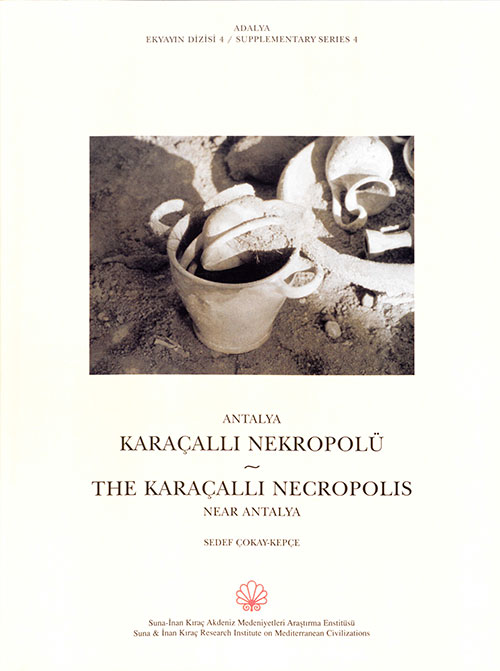
| Author | Sedef Çokay-Kepçe |
| Editor | Kayhan Dörtlük – Tarkan Kahya |
| Material Type | Book |
| Year | 2006, İstanbul |
| ISBN No | 9757078352 |
| Dimensions | 215×280 mm |
| Page | 272 pp, paperback with dust jacket |
| Figure | b/w col. ill. |
| Language | Bilingual in Turkish and English |
| Series | Adalya Supplementary Series 4 |
Summary
Karaçallı Hill is situated on the Pamphylian plain between the cities of Perge and Magydos. Formed of travertine like most parts of the region, the hill extends in the north-south direction and is roughly elliptical in shape with a flat top of approximately 150,000 sq. m. Karaçallı Hill is entirely covered by a necropolis, which was discovered accidentally in 1991 during the course of water works construction. The subsequent rescue excavation by the Antalya Museum covered the west side of the hill where the roads to Kemerağzı and Taşköy intersect. The excavation team concluded that the entire surface of the hill, including the excavation area, had been used as a stone quarry and burial ground in Antiquity.
The top of the hill still shows traces of quarry works in the north, east and south. The north-northwest of the hill, west of the Taşköy road, also has raised elevations, which were cut into all around to obtain stone. Carved into these raised areas are chamasorion-type sarcophagi. There are also a number of niches, chamber tombs and chamasorion-type sarcophagi carved into the rocks that have rolled down, along the western slope.
The necropolis at Karaçallı bears special significance in regard to the Classical period of the region due to the assemblage unearthed by the rescue excavation. An evaluation of the tombs and other finds with the help of comparative material and an assessment of their origins will cast a light upon the relations between Pamphylia and the neighbouring regions. In addition, the proximity of the ancient stone quarry to Perge, as well as the similarity of the foundation stones used in Classical Structure I on the acropolis of the city to the stone type found at Karaçallı, illuminates the relations between these two sites. In this context, the present study investigates the connections between Karaçallı and Perge, the identity of the dead buried in the Karaçallı necropolis and the localisation of the site.
There are three main tomb types: chamasorions, chamber tombs, cubicle tombs.
A general consideration of terracotta finds from Karaçallı shows that they can be grouped into two large groups as imported wares and local wares. Imported wares comprise black figure, red figure and black-glazed pottery as well as trade amphorae. The local pottery consists of drinking vessels and coarse ware. The metal and glass finds are both few in number and their place of manufacture remains difficult to assess.
